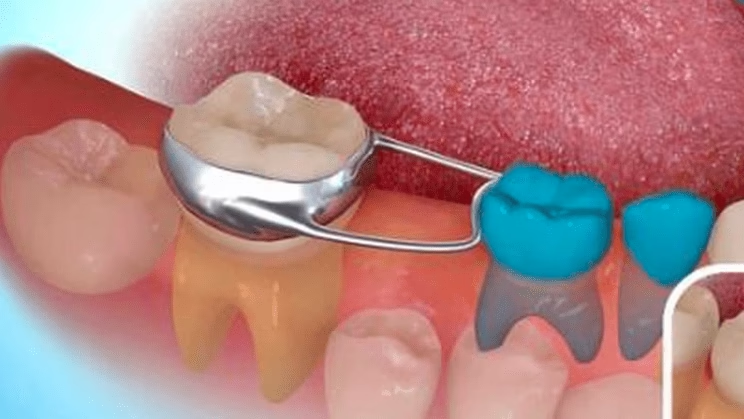
Space maintainers are small dental devices used in children to preserve the gap left by a prematurely lost baby tooth.
They prevent surrounding teeth from shifting into the space, helping permanent teeth erupt in the correct position.
Used in pediatric dentistry, they’re a key tool for preventing future orthodontic problems like misalignment and crowding.
🔍 Why Are Space Maintainers Important?
When a primary tooth falls out too early — due to decay, trauma, or extraction — nearby teeth can start drifting into the empty space.
This can lead to:
- ❌ Misalignment of incoming adult teeth
- ❌ Crowding or unwanted spacing
- ❌ Bite problems, like crossbites or overbites
- ❌ Need for braces or other complex orthodontic treatments later
🛡️ Using a space maintainer protects your child’s future smile by guiding teeth into their proper positions.
⚙️ Types of Space Maintainers
Space maintainers are classified into two main types: fixed and removable.
Each type is chosen based on your child’s needs and the location of the lost tooth.
1. Fixed Space Maintainers
These are cemented to the surrounding teeth and remain in place until the permanent tooth erupts.
Common types include:
- Band and Loop:
A metal band around a tooth with a loop extending across the gap.
👉 Ideal for single missing teeth. - Lingual Arch:
Used when multiple lower teeth are missing.
A metal wire rests behind the lower front teeth, anchored to the molars. - Distal Shoe:
Inserted under the gum line to guide molar eruption.
🩺 Often used when a baby molar is lost before the adult molar comes in. - Transpalatal Arch:
Spans across the roof of the mouth, connecting upper molars.
Helps maintain space on the upper arch.
2. Removable Space Maintainers
These act like retainers and are made of acrylic.
They can be taken out for cleaning and may even include artificial teeth for appearance and function.
✅ Benefits of Space Maintainers
These small devices can make a big difference in your child’s dental development:
- Prevents tooth misalignment and spacing issues
- Reduces future orthodontic costs
- Guides adult teeth into proper position
- Maintains healthy jaw and bite development
🧼 Care and Maintenance Tips
To keep a space maintainer working effectively:
- Brush and floss daily to prevent plaque buildup.
- Avoid sticky or hard foods that may loosen or damage it.
- Visit the dentist regularly to check and adjust the device.
- No fiddling: Avoid touching or playing with it using fingers or tongue.
❓ FAQ About Space Maintainers
1. Do all early tooth losses need space maintainers?
Not always. If the adult tooth is close to erupting, a space maintainer may not be needed.
2. Is the procedure painful?
Not really! Most kids adjust quickly.
Some mild discomfort is normal for a day or two.
3. How long do they stay in?
They stay in until the adult tooth is ready to erupt, which could take months or years depending on the child’s age and development.
4. Can adults use space maintainers?
They’re mostly for kids, but temporary solutions like partial dentures or implants serve a similar role for adults.
5. What if it falls out or loosens?
📞 Call your dentist right away.
Replacements or adjustments may be needed to avoid losing space.
🏁 Final Thoughts
Space maintainers are small but powerful tools in protecting your child’s oral health.
By keeping teeth aligned and guiding proper development, they help avoid costly treatments and keep that smile shining bright.
👶 If your child loses a baby tooth early, consult a pediatric dentist to see if a space maintainer is the right move for their growing smile!